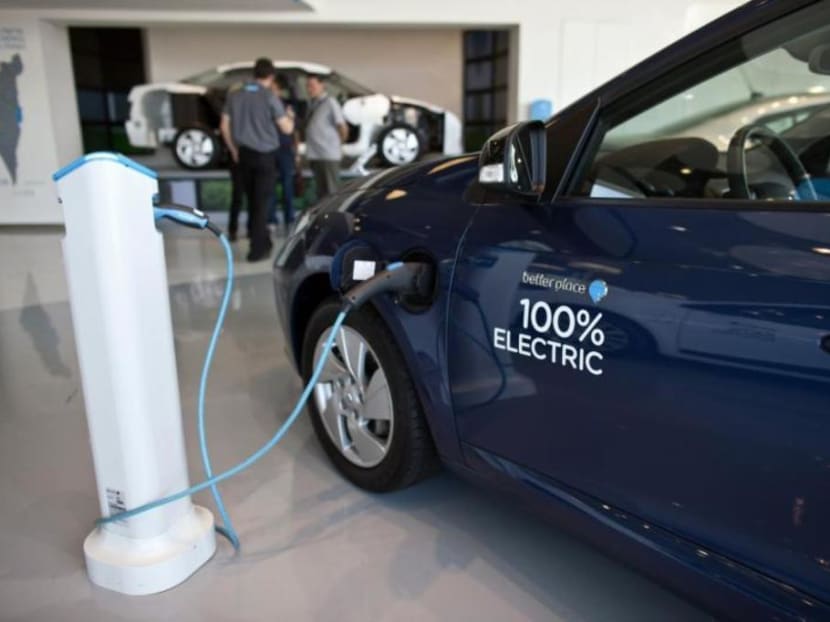LTA reviewing electric vehicle infrastructure plans; ‘not ideal’ if 8 cars share 1 charging point: Ong Ye Kung
SINGAPORE — Assuming that electric vehicles constitute a third of all private cars by 2030, about eight cars will have to share one charging point if the Government sticks to its current plan to expand infrastructure for electric vehicles, Transport Minister Ong Ye Kung said on Wednesday (Oct 14).

Transport Minister Ong Ye Kung said that the Land Transport Authority and other agencies will review plans for charging infrastructure of electric vehicles.
SINGAPORE — Assuming that electric vehicles constitute a third of all private cars by 2030, about eight cars will have to share one charging point if the Government sticks to its current plan to expand infrastructure for electric vehicles, Transport Minister Ong Ye Kung said on Wednesday (Oct 14).
In a written reply to a parliamentary question, Mr Ong said that this ratio of charging points to vehicles is “not ideal”. He announced that the Land Transport Authority (LTA) would thus review its current plan with other agencies.
He was responding to Mr Murali Pillai, Member of Parliament (MP) for Bukit Batok, who had asked for an update on the Government’s infrastructural plan to provide 28,000 charging points for electric vehicles by 2030.
Deputy Prime Minister Heng Swee Keat had announced the plan during his Budget speech in February, as he declared the Government’s ambition to phase out internal combustion engine vehicles and have vehicles run on cleaner energy by 2040.
LTA’s annual vehicle statistics for last year showed that of the 630,596 cars plying the roads here, only 1,120 (or 0.2 per cent) are fully electric. Some 1,700 electric-vehicle charging points are available for these cars.
Mr Ong said that the 28,000 charging points to be made available by 2030 will all be in government-related locations, adding that about two-thirds will be installed at Housing and Development Board (HDB) estates.
The other charging points will be installed in government-owned car parks, such as at offices or by the roadside.
This number, Mr Ong said, does not include charging points privately installed by residents in private estates, commercial developments such as shopping centres, or new commercial initiatives.
An example of a commercial initiative he gave was the smart charging solution by clean energy firm Sunseap Group, which announced last month that it has plans to install 10,000 ultra-slim charging points here by 2030.
LTA’s review will, therefore, include the option of incorporating a “significant effort” by commercial entities to build up the electric-vehicle charging infrastructure, with a view to bring down the electric vehicle per charging point ratio, he said.
“That way, we can better support the growth of electric vehicles in Singapore. We will announce details when ready,” Mr Ong added.
Besides conducting the review, LTA is conducting a study with HDB to see how many of its present charging points can readily support overnight electric-vehicle charging.
Out of 1,200 HDB car parks checked so far, a third can support overnight charging, while the other 800 will need some upgrading of the switch room or substation to support that, he said.
News of the review came as work got underway on a S$400 million innovation centre in Singapore, where South Korean conglomerate Hyundai will manufacture electric vehicles.








